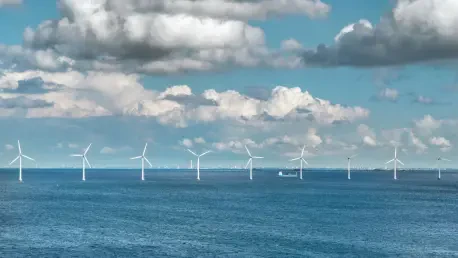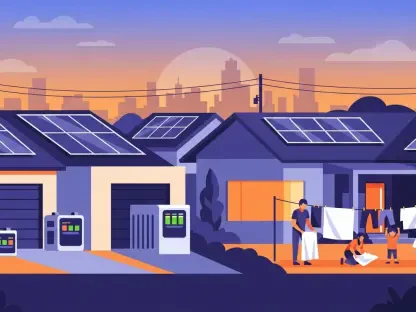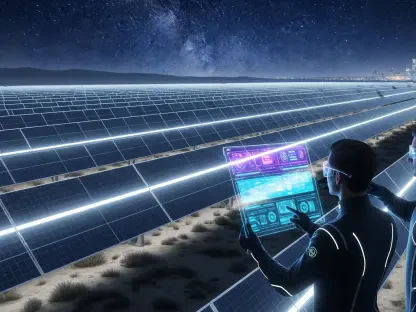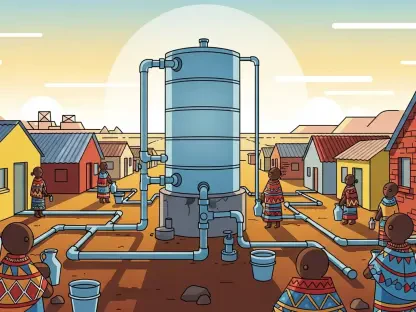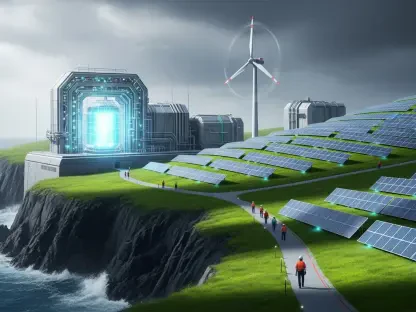Imagine a future where Ireland, a small island nation on the edge of Europe, becomes a powerhouse of clean energy, harnessing the relentless winds of the Atlantic to fuel its economy and protect its environment. With ambitious goals to source 80% of electricity from renewables by 2030 and achieve a climate-neutral economy by 2050, the country stands at a pivotal moment in its energy transition. Central to this vision is offshore wind energy, which promises not only to reduce reliance on fossil fuels but also to bolster energy security in a nation historically dependent on imports. Leveraging some of the continent’s strongest wind resources and an expansive maritime area, Ireland has a unique opportunity to lead in sustainable energy. This potential, however, comes with significant challenges and the need for strategic planning and investment to turn aspirations into reality. The journey toward a greener future hinges on how effectively this renewable sector is developed in the coming years.
Harnessing Nature’s Power for a Sustainable Tomorrow
Unlocking Ireland’s Renewable Energy Potential
Ireland’s commitment to renewable energy marks a transformative chapter in its national strategy, with offshore wind emerging as a linchpin in achieving climate goals. The target of generating 5 gigawatts (GW) of offshore wind capacity by 2030 is a cornerstone of a broader plan to reach 22 GW from various renewable sources, including 9 GW from onshore wind and 8 GW from solar power. Looking further ahead, the ambition to scale up to 37 GW of offshore wind by 2050 underscores the scale of this vision, representing a capacity that far exceeds current peak electricity demand. This push reflects a broader consensus that tapping into the country’s maritime wind resources is not just viable but essential for cutting greenhouse gas emissions. The momentum is evident in recent milestones, such as the successful allocation of 3.1 GW through the first offshore wind auction, setting a strong foundation for future growth in this sector.
Beyond the numbers, the environmental imperative driving this shift cannot be overstated. Ireland’s reliance on imported fossil fuels has long posed risks to both energy security and climate commitments, making the transition to renewables a pressing priority. Offshore wind offers a path to decarbonize the electricity grid while capitalizing on natural advantages, such as consistent and powerful coastal winds. This sector also aligns with international efforts to combat climate change, positioning Ireland as a potential leader in Europe’s green energy landscape. The planned second auction this year, alongside the development of a national designated maritime area plan (DMAP), highlights a structured approach to identifying and utilizing suitable sites. As these initiatives unfold, they promise to reshape how energy is produced and consumed, paving the way for a cleaner, more sustainable future for generations to come.
Building on Existing Strengths and Momentum
Ireland’s experience with onshore wind provides a solid base for expanding into offshore projects, demonstrating the country’s capacity to integrate renewables into its energy mix. Currently, onshore wind contributes nearly a third of electricity generation, showcasing a proven track record that can inform offshore strategies. Yet, the offshore sector remains in its infancy, with only one operational wind farm at Arklow Bank (Phase 1) in County Wicklow, boasting a modest 25 megawatts (MW) of capacity. With decommissioning on the horizon for this early project, the focus has shifted to a robust pipeline of larger-scale developments that promise to redefine the landscape. Projects like Codling Wind Park (1,300 MW) and Dublin Array (824 MW) signal a significant leap forward, reflecting both technological advancements and growing investor confidence in this emerging market.
The scale of upcoming initiatives further illustrates the accelerating pace of progress in this field. Developments such as Arklow Bank Phase 2 (800 MW), North Irish Sea Array (500 MW), and Oriel Wind Farm (375 MW) are poised to contribute substantially to national targets. Additionally, the Tonn Nua site off Waterford, earmarked for this year’s auction, is set to add 900 MW by 2030, reinforcing the strategic rollout of capacity. These projects collectively highlight a unified effort to overcome the limitations of current infrastructure and meet ambitious goals. While challenges in planning and execution persist, the diversity and scale of these endeavors suggest a maturing industry ready to tackle obstacles. This growing momentum is crucial for ensuring that offshore wind becomes a reliable pillar of Ireland’s energy system in the years ahead.
Economic and Strategic Impacts of Offshore Wind
Fueling Economic Growth and Job Creation
The economic potential of offshore wind energy in Ireland extends far beyond environmental benefits, promising a significant boost to the national economy. Projections estimate that this sector could inject at least €38 billion into the economy, creating thousands of jobs in construction, maintenance, and related industries. This financial impact is particularly vital for a country that ranks among the most energy import-dependent in the European Union, where reducing reliance on foreign fuels is a strategic necessity. By investing in offshore wind, Ireland can cultivate a domestic energy industry that not only supports sustainability but also fosters economic resilience. The dual advantage of clean energy and economic growth positions this sector as a transformative force for communities across the nation.
Moreover, the ripple effects of this industry are expected to benefit a wide range of sectors, from manufacturing to technology and logistics. The development of wind farms necessitates a skilled workforce, driving demand for training programs and educational initiatives focused on renewable energy. Partnerships between government, industry, and academic institutions will be key to building this talent pipeline. As global demand for clean energy solutions rises, Ireland has the chance to position itself as a hub for innovation and expertise in offshore wind technology. This economic opportunity, coupled with the environmental gains, underscores the multifaceted value of prioritizing this sector. The challenge lies in ensuring that policies and investments align to maximize these benefits while addressing potential hurdles in project delivery.
Strengthening Energy Security Through Industry Leadership
Energy security remains a critical concern for Ireland, given its historical dependence on imported fuels, and offshore wind offers a compelling solution to this vulnerability. By scaling up domestic renewable capacity, the country can significantly reduce its exposure to volatile global energy markets and geopolitical risks. The strategic importance of this shift is amplified by the involvement of leading global players in the renewable energy space, such as Ørsted, Statkraft, and Aker Horizons, which are driving innovation and investment in Ireland’s offshore sector. Ørsted, with a strong presence in the region, continues to explore new opportunities, while Statkraft aims to deliver 3 GW of clean energy by 2030 through projects like the North Irish Sea Array.
The active participation of these industry giants signals strong confidence in Ireland’s potential as a renewable energy leader, further solidifying the sector’s role in national strategy. Aker Horizons, through its acquisition of Mainstream Renewable Power, brings a diverse 20 GW portfolio that spans multiple renewable technologies, enriching the local market with expertise and resources. This convergence of government policy, industry investment, and environmental goals creates a powerful synergy that can transform the energy landscape. However, the limited existing infrastructure, with just one operational wind farm, highlights the urgency of accelerating project timelines. Overcoming logistical and regulatory challenges will be essential to ensure that this strategic vision translates into tangible outcomes for energy independence.
Reflecting on a Path to Sustainable Prosperity
Looking back, the journey of offshore wind energy in Ireland reveals a story of ambition tempered by the realities of scale and infrastructure. The commitment to achieving 5 GW by 2030 and an impressive 37 GW by 2050 stands as a testament to a nation determined to redefine its energy future. Major projects like Codling Wind Park and Dublin Array, alongside auctions that allocated significant capacity, mark critical steps forward. Industry leaders such as Ørsted and Statkraft play a pivotal role, bringing expertise and investment that fuel progress. Despite starting with just one modest wind farm, the groundwork laid through policy and planning offers a glimpse of what is possible. Moving ahead, the focus should shift to streamlining regulatory processes and fostering public-private collaborations to maintain this momentum. Addressing bottlenecks in project execution and ensuring community support will be vital next steps to secure a lasting legacy of clean, reliable energy for Ireland.
